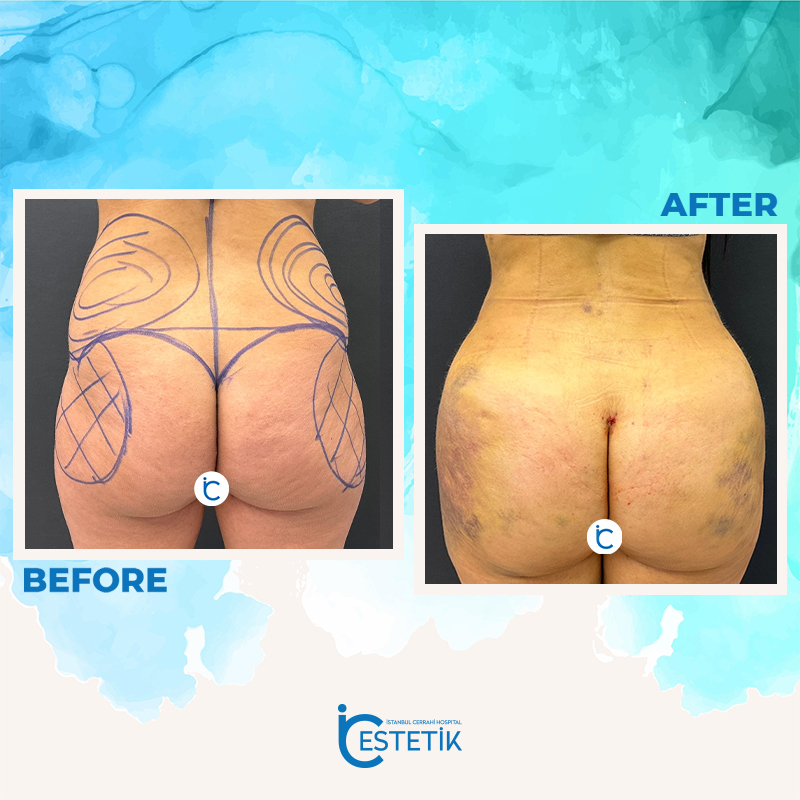Brazilian Butt Lift
A Brazilian butt lift (BBL), also known as buttock augmentation with fat grafting or safe subcutaneous buttock augmentation (SSBA), is a cosmetic procedure performed by plastic surgeons. The goal of a BBL is to enhance the appearance of the buttocks by adding volume and improving their shape.
During a Brazilian butt lift, fat is harvested from other areas of the body through liposuction. The fat is then processed and purified before being injected into specific areas of the buttocks to achieve the desired augmentation. The procedure aims to create a more rounded, lifted, and proportionate buttock contour.
What does a Brazilian butt lift do to your body?
During a Brazilian butt lift, a plastic surgeon will perform liposuction to remove excess fat from specific areas of your body, such as the abdomen, hips, or thighs. The extracted fat is then purified and carefully injected into targeted areas around the buttocks to enhance their shape, size, and symmetry. After the procedure and a period of recovery, you can expect your buttocks to appear larger, more projected, and have a more even shape. The fat transfer helps to create a natural-looking and proportionate contour. Additionally, the areas of your body from which fat was removed will also benefit from improved body contours, resulting in a smoother appearance.
What happens before a Brazilian butt lift procedure?
To undergo a Brazilian butt lift, it is generally required to be at least 18 years old. However, it’s important to note that individual body development can vary, and some individuals may not have completed puberty by the age of 18. In such cases, the results of the Brazilian butt lift procedure may be affected. It’s crucial to discuss any concerns or questions regarding age and development with your healthcare provider.
During your consultation, your healthcare provider will assess various factors, including your mental health, social conditions, and motivations for seeking a Brazilian butt lift. They may ask questions to better understand your expectations, body image concerns, and influences from others. It’s important to have a clear understanding of the risks associated with the procedure, such as the possibility of fat embolism.
Your healthcare provider will also evaluate your overall health and any preexisting conditions or risk factors. Inform them about any allergies you have and provide a comprehensive list of prescription and over-the-counter medications, including herbal supplements, that you are currently taking.
During the examination, your healthcare provider will assess specific areas of your body to determine the most suitable regions for fat harvesting through liposuction. These areas may include the lower back region, hips, inner thighs, outer thighs, and the presacral triangle, which is the space between the tailbone, sacrum, and rectum.
Open and honest communication with your healthcare provider is essential to ensure a thorough evaluation and to address any concerns or questions you may have about the Brazilian butt lift procedure.
Brazilian Buttock Lift Procedure
During a Brazilian butt lift procedure, you will undergo sedation with general anesthesia, ensuring that you are asleep and pain-free throughout the surgery. In some cases where only a small amount of fat transfer is needed, local anesthesia may be used, allowing you to remain awake while numbing only a specific area of your body.
Once you are properly sedated and numbed, your plastic surgeon and their team will perform the following steps:
- Utilize a suction device attached to a small, stainless steel instrument called a cannula.
- Make small incisions in your body and insert the cannula into the areas with excess fat between your skin and muscle.
- Remove the excess fat using the suction cannula and a large syringe. A significant amount of fat is typically required for a Brazilian butt lift, usually ranging from 300 ccs to 500 ccs (1 1/3 to 2 1/4 cups) on each side.
- Purify the fat that has been removed to ensure its suitability for transfer.
- Create three to five small incisions in specific areas around your buttocks.
- Inject the purified fat into the incisions around your buttocks. The upper region of your buttocks generally receives the most fat, while the middle area receives less. The purified fat is typically injected into the hypodermis, which is the subcutaneous tissue beneath the skin, rather than into the muscle.
- Close the incisions made for liposuction and fat transfer with stitches.
Brazilian Butt Lift FAQs
How long do the results of a Brazilian butt lift last?
Typically, the results of a Brazilian butt lift can last for several years, and in some cases, even several decades. However, the longevity of the results can vary depending on various factors, including individual body characteristics, lifestyle choices, and how well the buttocks are maintained and cared for during the recovery period.
How much pain is involved in a Brazilian butt lift?
While every individual’s pain tolerance and experience may vary, most people describe the discomfort following a Brazilian butt lift as more of a soreness rather than severe pain. The soreness is typically felt in the buttocks area and is primarily due to muscle soreness and discomfort.
What is the cost of a Brazilian butt lift in Istanbul?
The cost of a Brazilian butt lift (BBL) in Istanbul, Turkey can vary depending on several factors, such as the complexity of the procedure, the surgeon’s expertise, the facility’s reputation, and additional costs like anesthesia and post-operative care. It is recommended to consult with a reputable plastic surgeon or clinic in Istanbul to get a personalized quote based on your specific needs and desired outcome.
Is a Brazilian butt lift affordable in Turkey?
Many people choose to undergo cosmetic surgeries in Turkey because the country is known for its highly skilled doctors and more affordable prices compared to other countries. The cost of a Brazilian butt lift and other cosmetic surgeries in Turkey can be relatively lower, but it is important to prioritize the qualifications and experience of the surgeon and the quality of care provided in addition to the cost.




